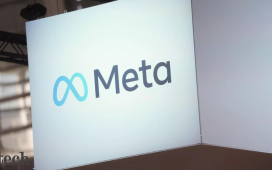One of the features that President Joe Biden cited in his plan to bring internet to every home and business in the United States by 2030 was affordability. But an important federal program established to keep broadband costs down for low-income households is set to expire next year.
The Affordable Connectivity Program has not reached everyone who is eligible. According to an Associated Press analysis of enrollment and census data, less than than 40% of eligible households have utilized the program, which provides monthly subsidies of $30, and in some cases, up to $75, to help pay for internet connections.
Still, the program has been a lifeline for Kimberlyn Barton-Reyes, who is paraplegic and visually impaired. Barton-Reyes did not have to wait for an in-person appointment when a seizure-alert system disconnected from her electric wheelchair in November. The company that services her chair assessed the problem remotely, ordered the parts she needed and got the chair fixed quickly.
“Most people are like ‘Internet is not a basic need,’” said Barton-Reyes, who lives in Austin, Texas. “It absolutely is for me.”
Barton-Reyes relies on Social Security disability insurance for her income while she takes part in a vocational program for adults who are newly blind. She is able to pay for her internet connection with an assist from the Affordable Connectivity Program. Barton-Reyes, who said an autoimmune issue damaged her vision, is working to get other eligible Austin residents signed up, too.
But the program’s future is uncertain. Its primary source of funding, a $14.2 billion allocation, is projected to run out by the middle of 2024. That could end access to affordable broadband for millions of people and hinder the Biden administration’s push to bring connectivity to the people who need it most.
“ACP is the best tool we’ve ever had to help people afford broadband,“ said Drew Garner, broadband policy advisor for Common Sense Media.
Advocacy groups are pushing Congress to extend the program.
“It’s a successful program in many ways, but with a lot of untapped potential because there’s still a long way to go to really make this universal to all people that are eligible for ACP,” said Hernan Galperin, a University of Southern California professor who has researched the program.
Enrollment in approximately 30 states lags behind the national average. Louisiana and Ohio have enrolled more than half of all eligible households.
“There’s probably nowhere in the state, no matter how populated the location is, where someone is not receiving a benefit from the ACP program,” said Veneeth Iyengar, executive director of Louisiana’s broadband program.
Ryan Collins, the broadband program manager of the Buckeye Hills Regional Council in Appalachian Ohio, said the ACP provides crucial assistance.
“If it were a matter of affording groceries or affording the internet, they chose groceries and so they would cancel their subscription,” Collins said.
The program emerged from a pandemic-era benefit and began with some 9 million households nationally. Participation has increased every month since, and today it serves approximately 20.4 million households.
“If the funding drops, all of that momentum will be lost,” said Khotan Harmon, senior program officer for the city of Austin.
Agriculture Secretary Tom Vilsack said the program has already proved itself.
“The Affordable Connectivity Program, the popularity of it, I think, is the kind of thing that will create the political-level support necessary for Congress to see that this is, at the end of the day, an appropriate utilization of resources,” Vilsack said on a recent media call announcing new grants to bolster rural broadband.
Advocates say letting the program expire could damage the already tenuous relationship between consumers and internet service providers just as the nation embarks on an ambitious plan to expand access nationally.
“That will have longer-term breakdowns in our effort to close the digital divide if people are not believing the programs that we’re offering them will be around for a while,” said Joe Kane, director of broadband policy at the Information Technology and Innovation Foundation.
Biden announced plans in June to distribute $42.5 billion to ensure broadband access for every U.S. home and business. But internet service providers that bid on state contracts will want to be sure they have customers.
“So not only will the ACP ending make it harder for individuals to afford service, it will make it less likely that ISPs build them the service to begin with,” Garner said.
Lawmakers from both parties, as well as the White House, support the program. Affordable internet was listed as a priority in an Aug. 10 letter from Biden’s budget director, Shalanda Young, to House Speaker Kevin McCarthy, R-Calif.
Participation also straddles the political divide.
As of the end of June, approximately 9.3 million households in Democratic districts and about 9.1 million households in Republican districts receive the monthly benefit, according to AP’s analysis.
Before receiving ACP benefits, New Hampshire-based mother Joanne Soares and her three school-age children had to use her phone to access the internet. Soares, who is deaf, said the home internet connection she can now afford lets her reliably access a video-based interpreting service needed to communicate over the phone.
“I need to have an internet to be able to connect with others,” Soares said. “Without the internet, how am I supposed to make any calls?”
——
Harjai is a corps member for The Associated Press/Report for America Statehouse News Initiative. Report for America is a nonprofit national service program that places journalists in local newsrooms to report on undercovered issues.











